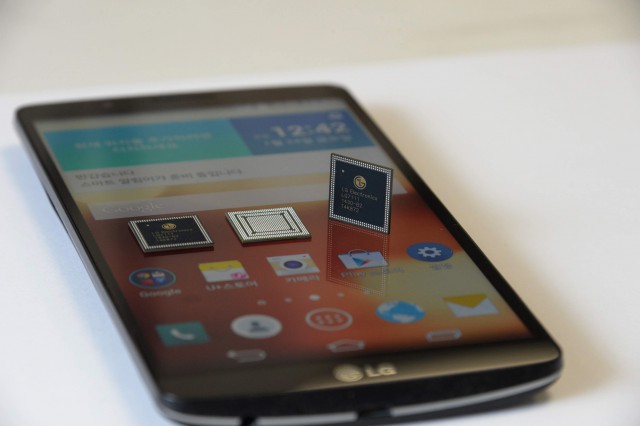LG introduces its first in-house mobile processor, powers G3 Screen phablet

The mobile device market is extremely diverse judging by the number of companies which sell smartphones and tablets today. There are hundreds, if not thousands, of vendors worldwide. On the other hand, when it comes to mobile processors, there are only a handful of companies which make them. Of those, even fewer are also handset vendors and even fewer still are well known by the average consumers: Apple and Samsung.
It is tough to make a splash in the mobile processor market, as top players such as Qualcomm and Apple are so far ahead in the game that it is very difficult for a new player to catch up and compete on equal footing with the leaders. LG, however, is not afraid to give it a try, as it just unveiled its first in-house mobile processor. And the South Korean maker is not wasting any time as it has already put it to use in its new G3 Screen phablet.
The processor, called Nuclun, features eight processors, and is based on the ARM big.Little architecture. Basically, it is similar to Samsung's latest high-end Exynos solutions in design. Nuclun has four ARM Cortex-A15 cores running at 1.5 GHz, while the remaining four cores are based on the Cortex-A7 architecture and are clocked at 1.2 GHz.
This type of design is meant to increase energy efficiency under light loads (that is where the Cortex-A7 cores come into play) and provide a power boost under heavy loads (through to the faster Cortex-A15 cores). Nuclun is capable of adjusting the number of cores in use depending on the load, according to LG, which means that it should be able to trigger all eight, or just four, if needed. This sort of behavior hasn't always been possible with the big.Little architecture, at least in Samsung's case (that has changed in its most-recent Exynos processors though).
The point of Nuclun? "With this in-house solution, we will be able to achieve better vertical integration and further diversity our product strategy against stronger competition. NUCLUN will give us greater flexibility in our mobile strategy going forward", says LG CEO Jong-seok Park.
Basically, LG wants to differentiate its products from what the likes of HTC, Samsung and Sony make, which use the same processors as LG in most of their mobile devices. LG may also want to decrease its reliance on Qualcomm's Snapdragons for more upscale devices, like its G3 successor.
G3 Screen, the first LG device to benefit from Nuclun's capabilities, is an oversized version of the company's G3 flagship, with, as you can see, a terrible name. It packs: 5.9-inch IPS display, with a lower resolution of 1,080 by 1,920 (compared to G3's 1,440 by 2,560); 13 MP main camera with optical image stabilization; 2.1 MP secondary camera; 2 GB of RAM, 3,000 mAh battery; Cat.6 4G LTE (300 Mbps download speeds); Android 4.4 KitKat. It comes in at 157.8 x 81.8 x 9.5 mm and 182 grams. G3 Screen will be available in black and white. There is no information regarding price or availability.